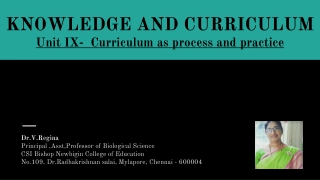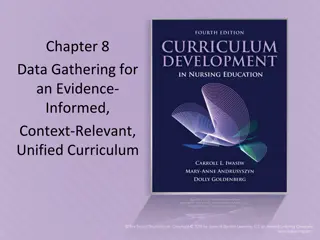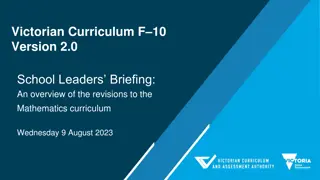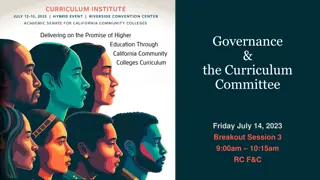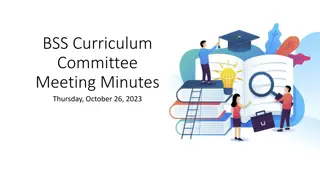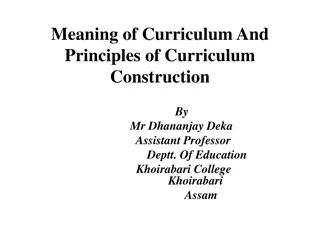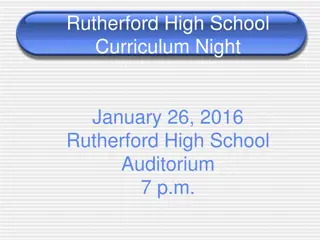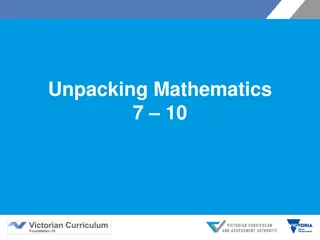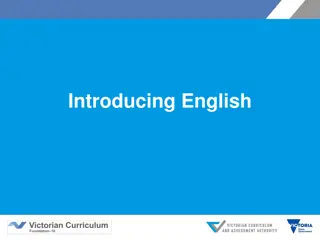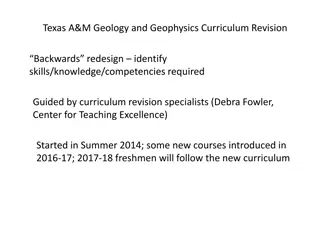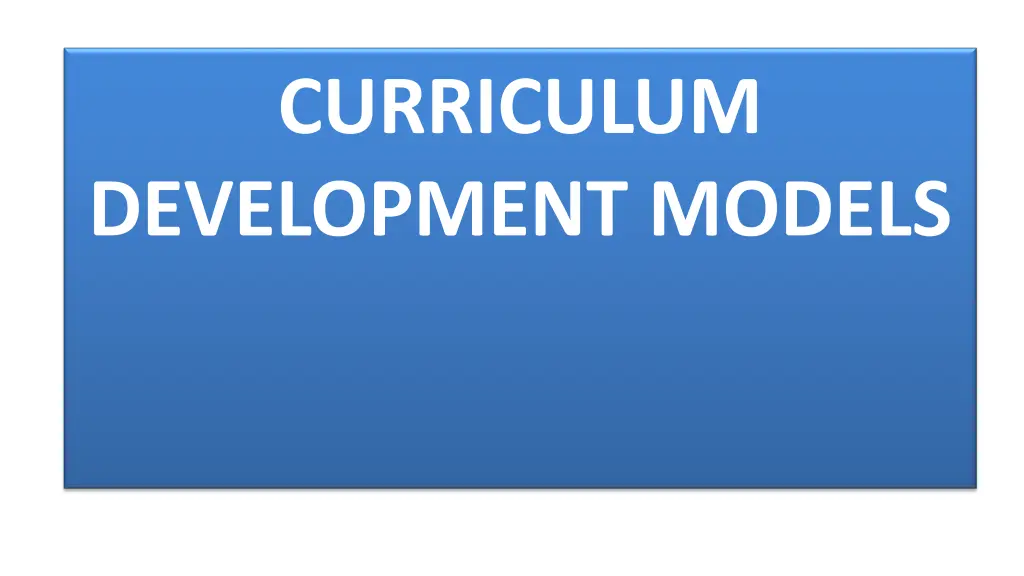
Understanding Curriculum Development Models: A Comprehensive Guide
Explore the world of curriculum development models, objectives, importance, and classification in education. Learn about the linear curriculum models and how they impact the educational process. Enhance your knowledge on developing and evaluating curriculum models.
Download Presentation

Please find below an Image/Link to download the presentation.
The content on the website is provided AS IS for your information and personal use only. It may not be sold, licensed, or shared on other websites without obtaining consent from the author. If you encounter any issues during the download, it is possible that the publisher has removed the file from their server.
You are allowed to download the files provided on this website for personal or commercial use, subject to the condition that they are used lawfully. All files are the property of their respective owners.
The content on the website is provided AS IS for your information and personal use only. It may not be sold, licensed, or shared on other websites without obtaining consent from the author.
E N D
Presentation Transcript
CURRICULUM DEVELOPMENT MODELS
OBJECTIVES By the end of this unit, each student is expected to be able to: 1) Describe various curriculum development models 2) Evaluate the strength of each model 3) Use models to develop a curriculum
CURRICULUM DEVELOPMENT It is the intentional process or activity for redesigning, developing and implementing curriculum interventions in the formal or corporate education. It is the process of constructing new or revising curriculum materials.
NOTE: Curriculum development is more comprehensive as it includes Planning, Implementation, and Evaluation. (The aim is to change for betterment).
CURRICULUM DEVELOPMENT MODELS WHAT IS A MODEL? Refers to conceptual frameworks or a patterns expressed diagrammatically or in words upon which curriculum development process is based. It is a format for curriculum development process.
It is a format developed to meet unique needs, contexts or purposes. Models are essentially patterns serving as guidelines to curriculum development . Some of the models found in the literature are simple, others are very complex.
IMPORTANCE Guide various components of curriculum. Show various stages of curriculum development. Provide framework for curriculum activities. Specify the relationship between the components of curriculum development process.
CLASSIFICATION OF CURRICULUM MODELS 1. Linear Tyler & Taba 2. Cyclic Wheeler 3. Interactive Kerr & Tanner and Tanner
LINEAR CURRICULUM MODELS (Rational/Objective) LINEAR The term used for models whose steps proceed in a more or less sequential, straight line from beginning to end.
Pioneers of the linear model Tyler Taba
TYLER MODEL (1949) Based on the following questions: 1. What educational purposes should the school seek to attain? 2. What educational experiences can be provided that are likely to attain these purposes? 3. How can these educational experiences be effectively organized? 4. How can we determine whether these purposes are being attained?
Alternatively Tyler invites us to ask ourselves: What outcomes do we want? What content is therefore needed? How can that best be taught/learned? How do we best assess and evaluate them?
According to Tyler: 1. OBJECTIVES: Form the basis for the selection, organization of learning experiences and basis for assessing the curriculum. 2. EVALUATION: Is a process by which one matches the initial expectation with the outcomes.
Tyler identified 3 sources of curriculum objectives: Society Learner Subject Matter or Content NOTE: Philosophy (mind) and Psychology (behavior) is used to screen off the most important objectives.
STRENGTH OF TYLERS MODEL The model is simple and linear. Curriculum development seems to be chronological process. Can be applied to any subject and to any level. At the time the model was first published (1940s) it was far more comprehensive than others available.
WEAKNESS OF TYLERS MODEL The separation of the four steps tends to underestimate the interrelationships which occur in any curriculum planning activity. Tyler is only concerned about evaluating intended instructional objectives. He ignores the unintended learning which invariably occur. What to do after evaluation is not indicated. A model seems to be administrative in nature.
HILDA TABAS MODEL OF CURRICULUM DEVELOPMENT Emphasized participation of all (ie from grass-root levels). Thus a process is inductive and empower teachers rather than administrators (compare to Tyler model).
TABAS MODEL Diagnosis of needs Formulation of objectives Selection of content Organization of content Selection of learning experiences Organization of learning experiences Determination of what to evaluate and means of doing it
Meaning therefore: 1) Identify the needs of the students 2) Develop objectives 3) Choose content that matches the objectives 4) Organize content considering the learners background and experiences 5) Select instructional method that promote student engagement 6) Organize learning activities and experiences 7) Evaluate to ensure mastery
STRENGTH Acknowledge importance of situational analysis to determine learning needs. Ensure teachers participation (act as developers and implementers). Uses the inductive method.
WEAKNESS Lack of interrelatedness of components. Still it is sequential (as that of Tyler). What to do after evaluation not indicated.
Tyler vs Taba models TYLER TABA Deductive in nature ie Starts with a general plan and working down to the specifics. Administrators are empowered to develop a curriculum. Inductive in nature ie Starts with specifics and build up to a general design. Start from the grassroot levels thereby empowering teachers.
CYCLIC CURRICULUM MODEL Cyclic models lie along with the continuum between the extremes of rational and dynamic models ie they incorporate elements of both extremes. Basically they are an extension of rational model in that they are essentially logical and sequential in approach.
WHEELERS MODEL Being a modification of Tyler s model Wheeler s model: It is Cyclic. Evaluation is not terminal. Findings from the evaluation are fed back into the objectives and the goals, which influence other stages.
Shortcomings Retains some shortcomings of Tyler and Taba models. Numbering suggests that curriculum development process starts with objectives and ends with evaluation. Inter-relation among curriculum components is lacking.
INTERACTIVE MODEL (Dynamic model) The interaction model of curriculum development Is seen to be a dynamic process which can begin with any curriculum element, and these elements can be followed in any sequence.
Pioneers of the interactive model Kerr Tanner and Tanner
KERRS MODEL Most of the features in Kerr s model resemble those in Wheeler s and Tyler s models. However, Kerr divided the domains into four areas 1) Objectives 2) Knowledge 3) School learning experiences 4) Evaluation
THINGS TO NOTE IN KERRS MODEL 1) Objectives are divided into three groups: Cognitive, Affective, and Psychomotor. 2) The model further indicates that knowledge should be: organized, integrated, sequenced, and reinforced.
3) School learning experiences are influenced by: Societal opportunities Content Teaching methods Pupil and teacher relationships Individual differences The maturity of the learners The school community
STRENGTH OF KERRS MODEL The four domains are interrelated. Thus: Everything influences everything else It is possible to start an analysis at any point Evaluation in Kerr s model is the ongoing collection of information for use in making decisions about the curriculum.
In designing a curriculum, you need to follow the following procedures: 1. Establish or obtain general goals of education. 2. Reduce the general goals to specific instructional objectives, including objectives that cover different domains and levels. 3. Assess prior student knowledge and/or abilities. 4. Break learning into small, sequential steps. 5. Identify teacher behaviour. 6. Identify students behavior.
7. Write a description of the lesson. 8. Evaluate to see if the intended outcomes have been achieved. NOTE: If you complete these eight stages, you would have conducted what is generally referred to as the task analysis process.
TANNER AND TANNER (1975) YOU SHOULD DEVELOP THIS MODEL AS AN ASSIGNMENT How does this model look like conceptually (number of elements, sequence, pictorially)? What is the difference between this model and that of Kerr s?
WHAT DO ALL THESE MODELS INFORM ME?
FIRST All models emphasize: 1. The importance of considering a variety of factors that influence curriculum. 2. Curriculum designing is a stage by stage process.
SECOND All models together highlights 4 main curriculum elements: 1) Purpose (Goals and Objectives) 2) Content or Subject matter 3) Methods or Learning experiences 4) Evaluation
ASSIGNMENT Review the Oliva curriculum model: What are the components of Oliva model of curriculum? What are the specific steps of Oliva model of curriculum? What ideas and suggestions could you provide regarding Oliva model of curriculum?

